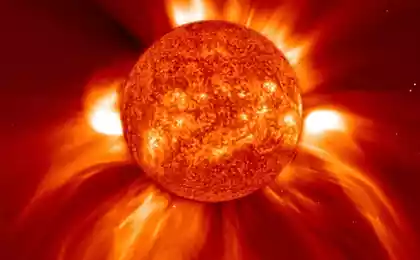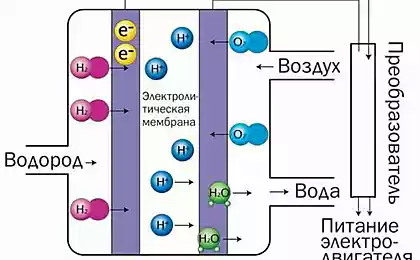174
Windows capable of generating electricity are almost a reality
Researchers from the University of Minnesota and the University of Bicocca have taken a step closer to the emergence of windows that can efficiently absorb solar energy thanks to high-tech silicon nanoparticles.
Researchers have created a technology to embed silicon nanoparticles into so-called efficient luminescent solar concentrators (LSCS). These hubs are a key element for creating windows that can efficiently harvest solar energy. As light passes through their surface, the desired frequencies of light are trapped inside and directed to the edges, where small solar cells begin to operate that capture solar energy.

The study was published in the scientific journal Nature Photonics.
Windows that collect solar energy are called photovoltaic windows. They are the next step in the field of renewable energy technologies, as they have great potential to significantly increase the surface of buildings suitable for electricity generation without affecting their appearance, which is especially important for large cities. Photovoltaic windows do not require any bulky additional load-bearing structures and do not stand out by anything unusual against the background of the frame.
The idea of solar concentrators and solar cells integrated into the buildings being designed has been a top topic for decades, but this study differs by one key point: silicon nanoparticles. In the case of previous developments, either too rare and expensive, or toxic substances such as cadmium and lead were used. Silicon is ubiquitous in the environment and is nontoxic. It also works more efficiently by absorbing light at different wavelengths. However, silicon in its usual volumetric form is not transparent.
Therefore, scientists in their laboratory reduced the size of silicon crystals to several nanometers, that is, about one ten thousandth diameter of a human hair. With such dimensions, the properties of silicon change, and it becomes an effective light emitter with an important property - it does not absorb its own glow.

This is a key feature that makes silicon nanoparticles ideal for use in LSCS.
The researchers say that the optical characteristics of silicon nanoparticles and their near-perfect compatibility with industrial polymeric LSCS are the way to create efficient photovoltaic windows that can absorb more than 5% of the sun’s energy at extremely low cost. Silicon nanoparticles are formed during a high-tech process using a plasma reactor and formed into a powder.
Each particle consists of less than two thousand silicon atoms. The powder is converted into a solution and then added to a polymer: as a flexible sheet of plastic material or applied to the surface with a thin film.
P.S. And remember, just changing our consumption – together we change the world!
Source: solarpanels.com.ua/news/okna-sposobnye-generirovat-elektrichestvo-pochti-stali-realnostyu/
Researchers have created a technology to embed silicon nanoparticles into so-called efficient luminescent solar concentrators (LSCS). These hubs are a key element for creating windows that can efficiently harvest solar energy. As light passes through their surface, the desired frequencies of light are trapped inside and directed to the edges, where small solar cells begin to operate that capture solar energy.

The study was published in the scientific journal Nature Photonics.
Windows that collect solar energy are called photovoltaic windows. They are the next step in the field of renewable energy technologies, as they have great potential to significantly increase the surface of buildings suitable for electricity generation without affecting their appearance, which is especially important for large cities. Photovoltaic windows do not require any bulky additional load-bearing structures and do not stand out by anything unusual against the background of the frame.
The idea of solar concentrators and solar cells integrated into the buildings being designed has been a top topic for decades, but this study differs by one key point: silicon nanoparticles. In the case of previous developments, either too rare and expensive, or toxic substances such as cadmium and lead were used. Silicon is ubiquitous in the environment and is nontoxic. It also works more efficiently by absorbing light at different wavelengths. However, silicon in its usual volumetric form is not transparent.
Therefore, scientists in their laboratory reduced the size of silicon crystals to several nanometers, that is, about one ten thousandth diameter of a human hair. With such dimensions, the properties of silicon change, and it becomes an effective light emitter with an important property - it does not absorb its own glow.

This is a key feature that makes silicon nanoparticles ideal for use in LSCS.
The researchers say that the optical characteristics of silicon nanoparticles and their near-perfect compatibility with industrial polymeric LSCS are the way to create efficient photovoltaic windows that can absorb more than 5% of the sun’s energy at extremely low cost. Silicon nanoparticles are formed during a high-tech process using a plasma reactor and formed into a powder.
Each particle consists of less than two thousand silicon atoms. The powder is converted into a solution and then added to a polymer: as a flexible sheet of plastic material or applied to the surface with a thin film.
P.S. And remember, just changing our consumption – together we change the world!
Source: solarpanels.com.ua/news/okna-sposobnye-generirovat-elektrichestvo-pochti-stali-realnostyu/
Sedric: VW showed an unmanned electric vehicle of the fifth level of autonomy
What danger can bear the rain drops
























